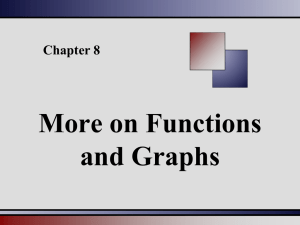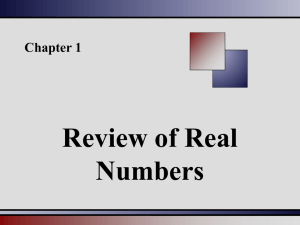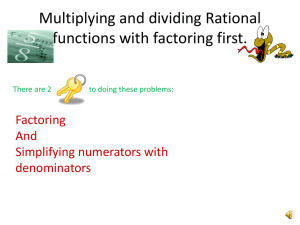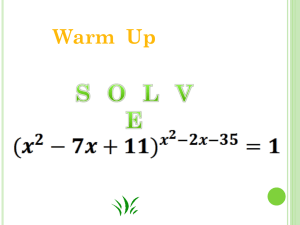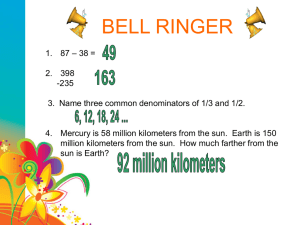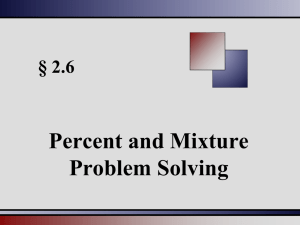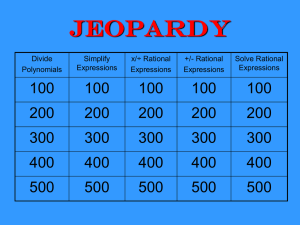Beginning & Intermediate Algebra. 4ed
advertisement
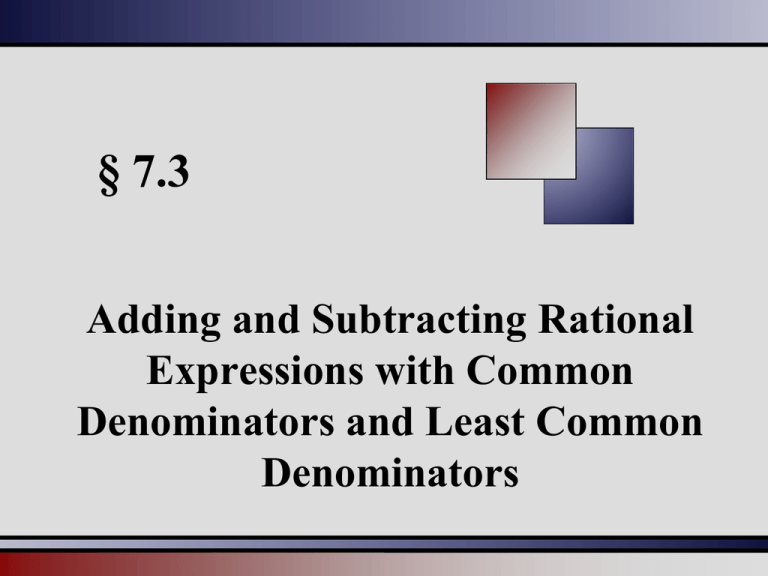
§ 7.3 Adding and Subtracting Rational Expressions with Common Denominators and Least Common Denominators Rational Expressions Adding and subtracting rational expressions with common denominators when P, Q and R are polynomials and R 0, P Q PQ R R R P Q P Q R R R Martin-Gay, Beginning and Intermediate Algebra, 4ed 2 Adding Rational Expressions Example: Add the following rational expressions. 4p 3 3p 8 7 p 5 4 p 3 3p 8 2p 7 2p 7 2p 7 2p 7 Martin-Gay, Beginning and Intermediate Algebra, 4ed 3 Subtracting Rational Expressions Example: Subtract the following rational expressions. 8 y 16 8( y 2) 8y 16 8 y2 y2 y2 y2 Martin-Gay, Beginning and Intermediate Algebra, 4ed 4 Subtracting Rational Expressions Example: Subtract the following rational expressions. 3y 6 3y 6 2 2 2 y 3 y 10 y 3 y 10 y 3 y 10 3( y 2) ( y 5)( y 2) 3 y5 Martin-Gay, Beginning and Intermediate Algebra, 4ed 5 Least Common Denominators To add or subtract rational expressions with unlike denominators, you have to change them to equivalent forms that have the same denominator (a common denominator). This involves finding the least common denominator of the two original rational expressions. Martin-Gay, Beginning and Intermediate Algebra, 4ed 6 Least Common Denominators Finding the Least Common Denominator (LCD) 1) Factor each denominator completely. 2) The LCD is the product of all unique factors found in Step 1, each raised to a power equal to the greatest number of times that the factor appears in any one factored denominator. Martin-Gay, Beginning and Intermediate Algebra, 4ed 7 Least Common Denominators Example: Find the LCD of the following rational expressions. 1 3x , 6 y 4 y 12 6 y 2 3y 4 y 12 4( y 3) 2 ( y 3) 2 So theLCD is 2 3 y( y 3) 12y( y 3) 2 Martin-Gay, Beginning and Intermediate Algebra, 4ed 8 Least Common Denominators Example: Find the LCD of the following rational expressions. 4 4x 2 , 2 2 x 4 x 3 x 10 x 21 x 4x 3 ( x 3)(x 1) 2 x 10x 21 ( x 3)(x 7) 2 So theLCD is (x 3)(x 1)(x 7) Martin-Gay, Beginning and Intermediate Algebra, 4ed 9 Least Common Denominators Example: Find the LCD of the following rational expressions. 2 3x 4x , 2 2 5x 5 x 2 x 1 5x 5 5( x 1) 5( x 1)(x 1) 2 2 x 2x 1 ( x 1) 2 2 So the LCD is 5( x + 1)( x - 1)2 Martin-Gay, Beginning and Intermediate Algebra, 4ed 10 Least Common Denominators Example: Find the LCD of the following rational expressions. 1 2 , x 3 3 x Both of the denominators are already factored. Since each is the opposite of the other, you can use either x – 3 or 3 – x as the LCD. Martin-Gay, Beginning and Intermediate Algebra, 4ed 11 Multiplying by 1 To change rational expressions into equivalent forms, we use the principal that multiplying by 1 (or any form of 1), will give you an equivalent expression. P P P R PR 1 Q Q Q R QR Martin-Gay, Beginning and Intermediate Algebra, 4ed 12 Equivalent Expressions Example: Rewrite the rational expression as an equivalent rational expression with the given denominator. 3 5 9y 72 y 9 4 3 8y 24y 4 3 4 5 5 9 9y 8y 9y 72y Martin-Gay, Beginning and Intermediate Algebra, 4ed 13
